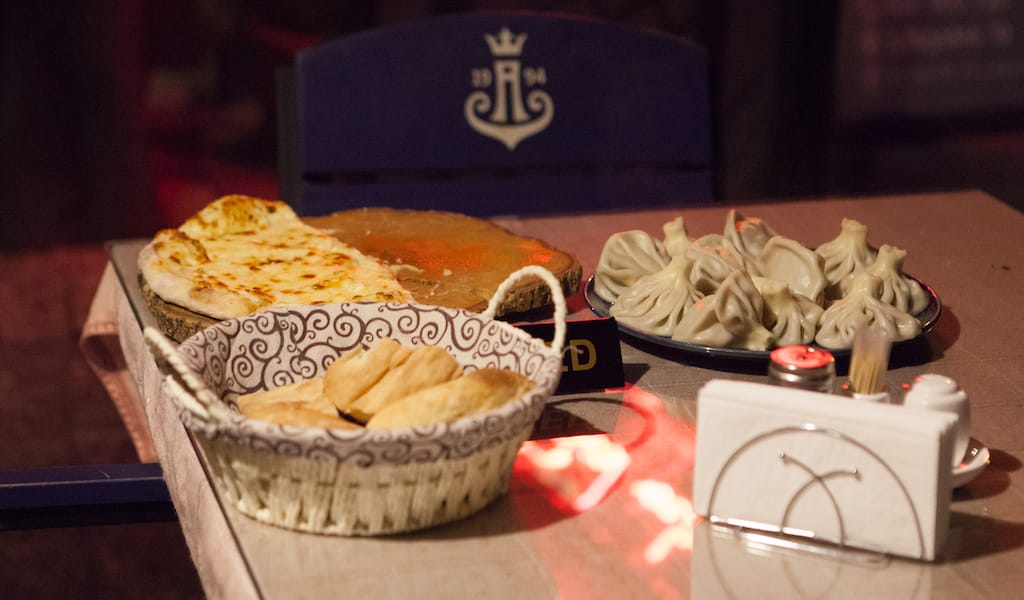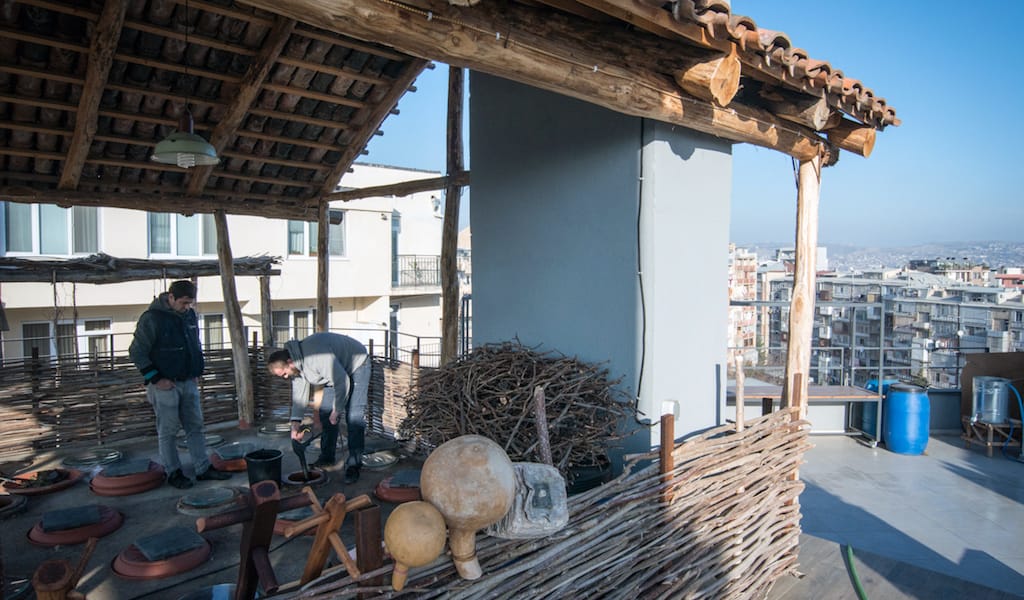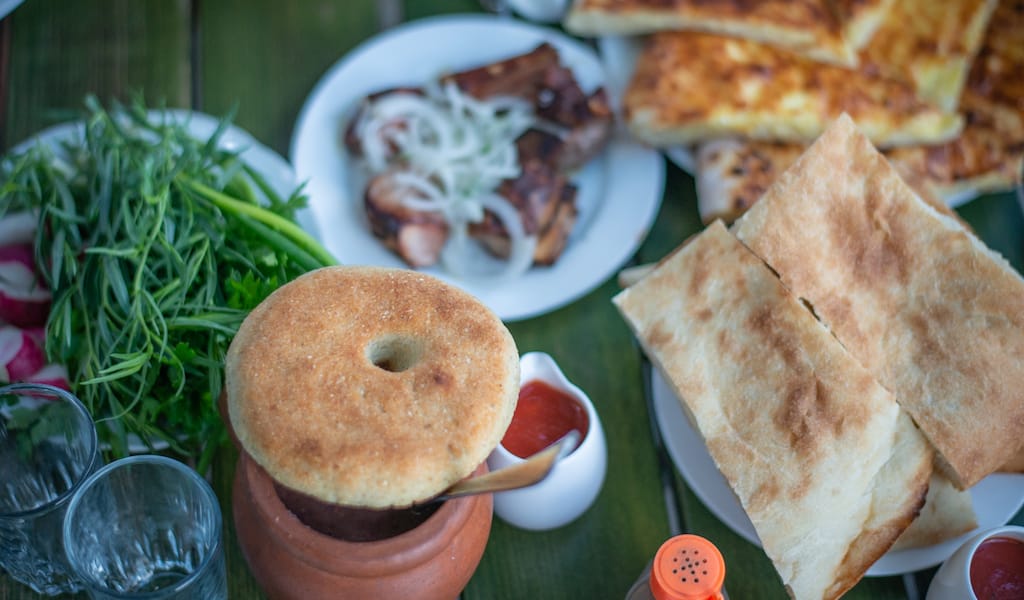For a dish so ubiquitous, one would be forgiven to think there’s little to debate about Georgia’s national dumpling, the khinkali. But just as tastes vary, every Georgian has their own khinkali preferences and opinions.
That’s certainly the case for chef Gela Arabuli, who believes khinkali has been gentrified and mass produced to the point that most people have forgotten the dumplings’ origins in the mountains and how they should really taste. “Real khinkali is from the high mountains. And there are no pigs in the mountains,” insists Gela, referring to the most popular and common filling of minced beef and pork in equal parts as kalakuri, or “city style,” khinkali.
And so, with a mission to serve real mountain khinkali, Gela opened his restaurant, Pictograma, in April 2022. It’s located in an ancient brick-lined cellar just below Tbilisi’s famous Dry Bridge, known for its pavement flea market of Soviet-era memorabilia that draws tourists by the scores daily.
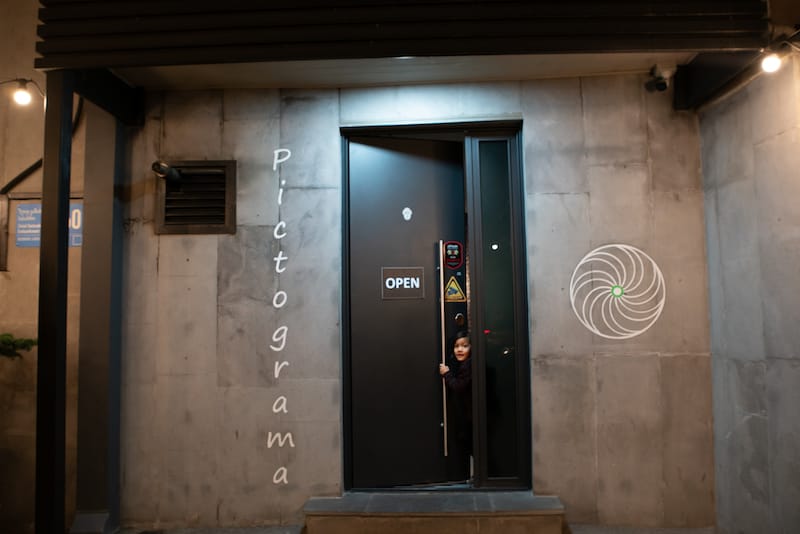
Plausible theories suggest that khinkali evolved from dumplings introduced during the Mongol invasions of the 13th century. But within Georgia, the northern Greater Caucasus highlands of Pshavi and Khevsureti are credited as the dish’s home turf. And as a Khevsureti native from the picturesque valley of Juta, Gela is adamant that his view on khinkali matters: “Our ancestors were pagans [who later became Christians] and they did not eat pork. That’s why we want our khinkali to be true to their original recipe,” continues Gela, adding that his kitchen is pork-free. (Even today, trekkers and tourists are advised not to carry pork products when trekking in Khevsureti, as it’s believed to bring bad luck.)
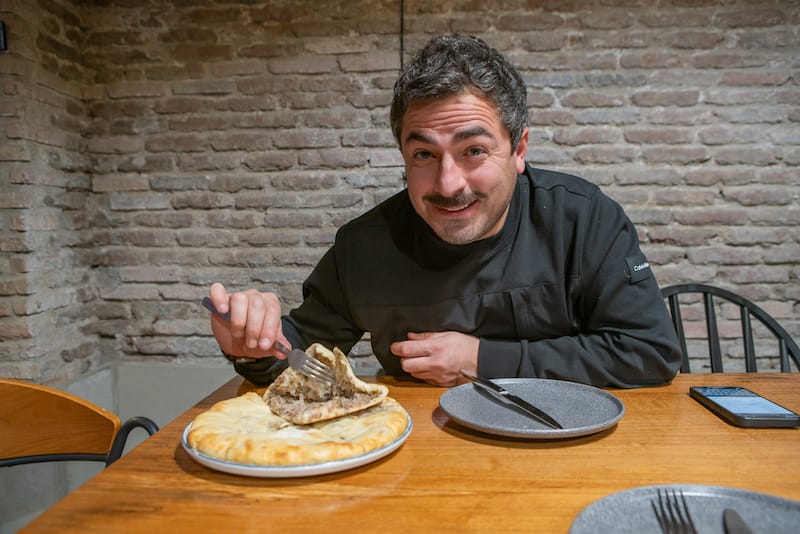
At Pictograma, the khinkali are completely handmade, from kneading and rolling the dough to the delicate folds that hold juicy minced beef mixed with the only permissible spices according to Gela – khondari or summer savory, and kvlia or dzira, local names for caraway. No greens allowed. Gela has also put experts – Khevsuri women – in charge of the khinkali-making in the Pictograma kitchen. While more expensive than other places at 2.50 gel (.90 USD) a piece, we had to agree that the price is justified for the juicy, gristle-free cuts of beef that make up the mince that go into Pictograma’s khinkali. The dough here is thicker than the machine-rolled dough used in the paper-thin khinkali in larger establishments, which some people prefer. But here they retain their rustic chewy texture that adds a comforting homemade touch.
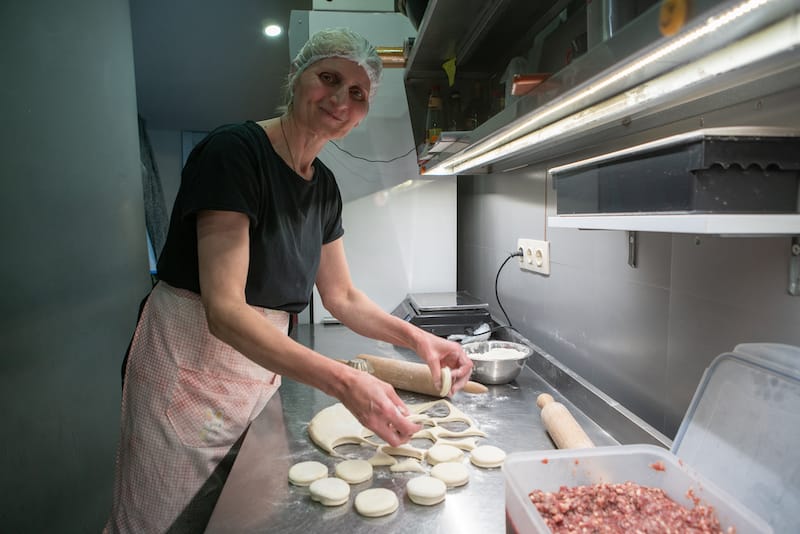
Pictograma serves just two types of khinkali – a meat filling or a vegetarian option with cheese and potatoes. The rest of the menu is dedicated to Khevsurian food rarely, if at all, found on other restaurant menus. It’s here you can familiarize yourself with kuserbo, a dish of potatoes grated and fried with cheese into a thick, pancake-like shape, which Gela serves with beef slow-cooked in Saperavi wine.
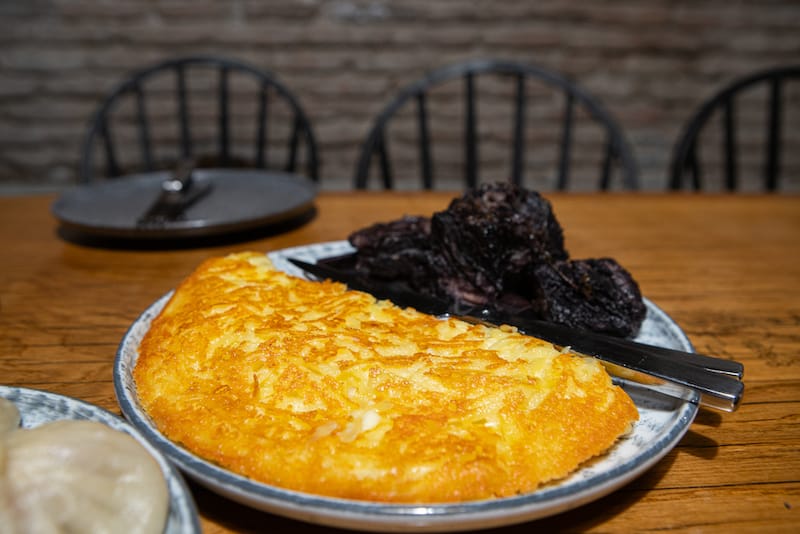
Other mountain specialties to not miss out on include the qadisqveri – a baked khachapuri– type dish with minced beef, cheese and wild leeks called shuba that Gela harvests from the mountains of Juta, his native village, and preserves in brine. Gela also serves a creamy soup made from the same leeks – which he admits is one of few “gentrified” dishes he created to appeal to urban tastes – along with two salads. Meat lovers might also enjoy the “shadsmobi khortsi,” marinated fried beef, which Gela insists we try. Thin strips of beef are left to marinate in the same spices used in his khinkali for at least a week, and then pan-fried and served with sour cream. This is a common homemade dish from his region, but rarely found in restaurants, save this one.
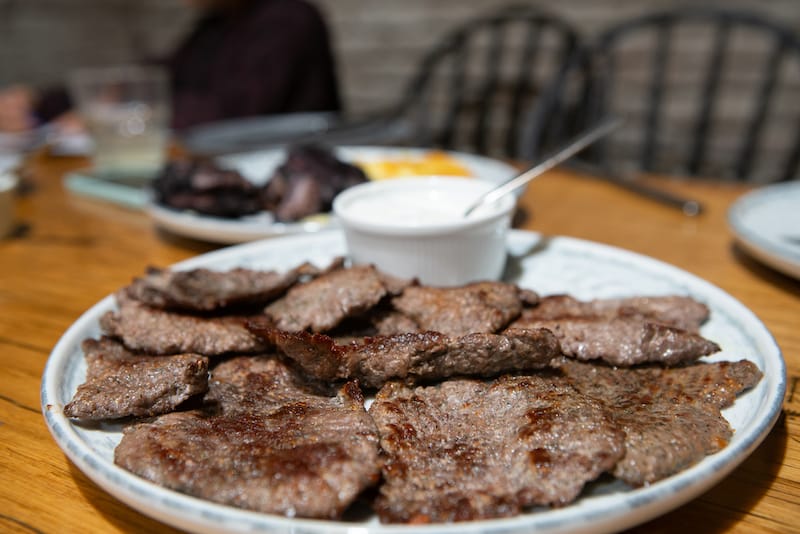
Many of the recipes served at Pictograma were perfected at a mountain guesthouse Gela runs in a high Caucasus valley near his home village, which offers magnificent views of the Chaukhi massif. Fifth Season, his guesthouse, is a popular destination, usually completely booked out with visiting trekkers and instagrammers all summer long, but Pictograma remains mostly a local haunt. “Most foreigners who step in are not very familiar with the names on the menu. But my regular clients are mostly Georgians who know what real khinkali tastes like and appreciate real Khevsuri food,” he says. In fact, it was a Tbilisi friend of his who convinced Gela to open his restaurant after tasting his mountain lodge menu. The friend-turned-silent-business-partner handles all the admin and financial work, freeing up Gela to focus on more important matters. “I’m the creative director, you can say,” he adds with a chuckle.
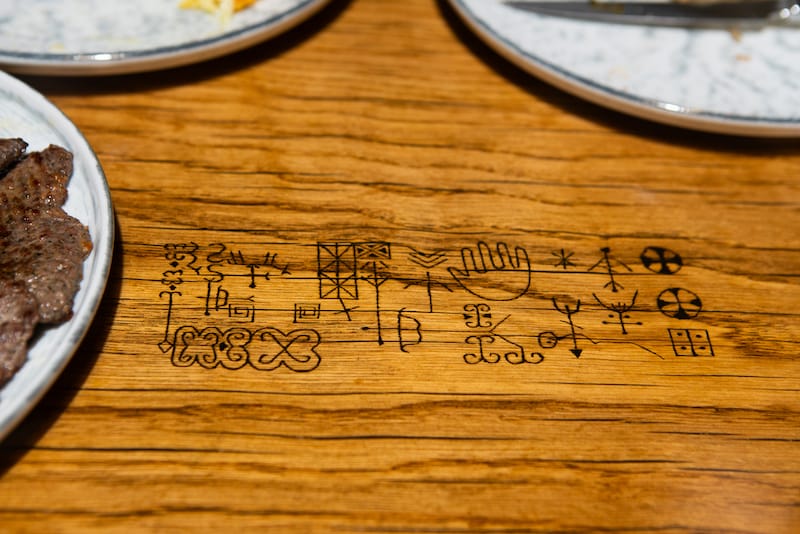
In addition to creating the menu, Gela also made each of the tables at Pictograma by hand, embellishing them with pictographs found on stone towers and ritualistic stone slabs of Khevsureti. The most prominent is the “Borjgali,” or the circular sign for the sun that also symbolizes eternity, and one that gives the restaurant its name and logo. And as Gela pointed out, the delicate folds of the khinkali also resemble this sacred sign when viewed from the top – yet another reason the khinkali is not any dumpling, but one that deserves the respect and passion shown to it at Pictograma.
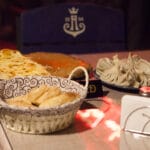 November 22, 2023 Asi Khinkali: From the Mountains to Tbilisi
November 22, 2023 Asi Khinkali: From the Mountains to Tbilisi
Salty, sticky, and above all pungent, dambalkhacho certainly isn’t for the fainthearted. […] Posted in Tbilisi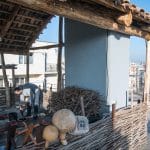 February 28, 2023 Bina 37
February 28, 2023 Bina 37
We are on the eighth floor terrace of a relatively new apartment building in the Vedzisi […] Posted in Tbilisi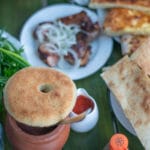 January 30, 2023 Salobie
January 30, 2023 Salobie
We met Tega at a friend’s dinner table shortly after moving to Tbilisi in 2002. Tall, […] Posted in Tbilisi
Pearly JacobPearly Jacob
Published on January 30, 2024
Related stories
November 22, 2023
TbilisiSalty, sticky, and above all pungent, dambalkhacho certainly isn’t for the fainthearted. But for iron-nostrilled khinkali-lovers, the soft, moldy cheese is one of the main attractions at Asi Khinkali, a cozy cellar restaurant in Tbilisi's Marjanishvili district. Made in the mountains, dambalkhacho is challenging to find in the city, but Asi Khinkali has it on…
February 28, 2023
TbilisiWe are on the eighth floor terrace of a relatively new apartment building in the Vedzisi neighborhood, nodding our heads with joker grins like gawkers at a freak show. The view is as spectacular as they come in mountainy Tbilisi, but that’s not what we’re chuckling at. There are 43 ceramic urns – kvevri –…
January 30, 2023
TbilisiWe met Tega at a friend’s dinner table shortly after moving to Tbilisi in 2002. Tall, debonair, with dark puppy eyes and an ever-present Colgate smile, Tega made it a point from that first meeting to take us under his wing and introduce us to the best Tbilisi had to offer. That was how we…

















































